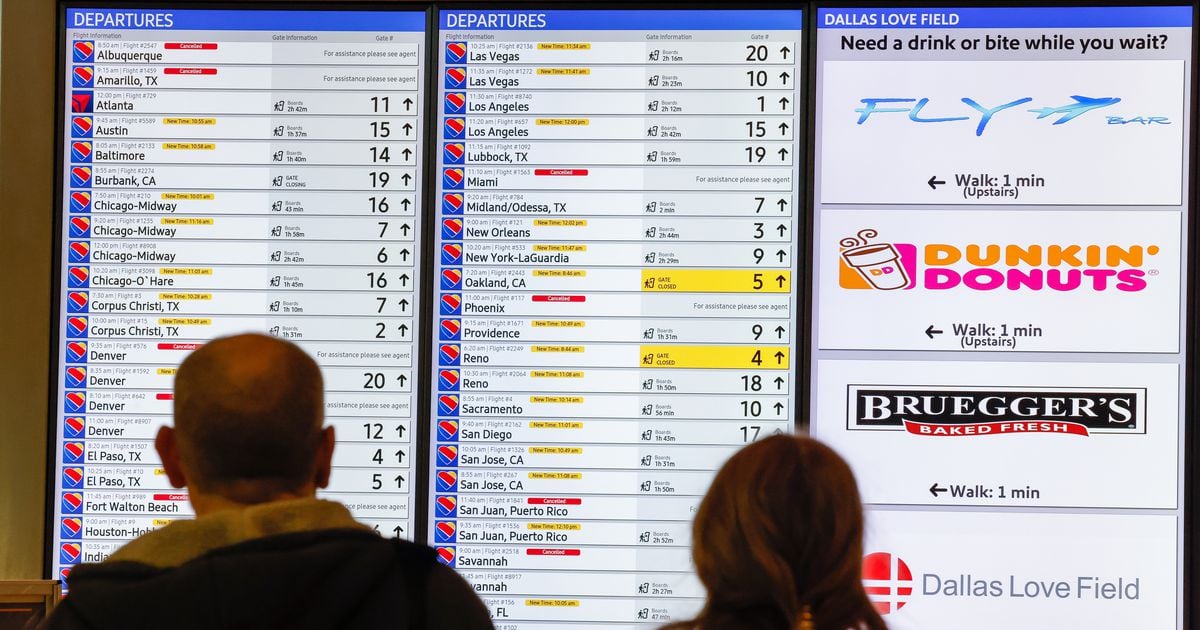Improving Air Traffic Control: Mitigating Black Screens And System Failures

Table of Contents
Understanding the Causes of Air Traffic Control System Failures
Air traffic control system failures can stem from a variety of sources, requiring a multi-pronged approach to mitigation. Understanding these root causes is the first step towards building a more robust and reliable system.
Hardware Malfunctions
Aging infrastructure and outdated equipment are major contributors to air traffic control system failures. This can manifest in several ways:
- Unexpected breakdowns: Components reach the end of their lifespan, leading to unpredictable failures.
- Power outages and surges: Unstable power supplies can crash entire systems, impacting radar, communication, and data processing.
- Hardware component failures: Servers, radar systems, communication networks, and other vital components can malfunction, causing cascading failures.
- Lack of redundancy: The absence of backup systems means a single point of failure can bring down the entire operation. This lack of redundancy significantly increases the risk of ATC system downtime.
Software Glitches and Bugs
Software-related issues are another major cause of air traffic control system failures. These can include:
- Software vulnerabilities and security breaches: Outdated software is vulnerable to cyberattacks, potentially leading to system compromise and disruption. This is especially critical given the sensitive nature of ATC data.
- Unforeseen interactions between different software modules: Complex software systems can have unexpected interactions between modules, causing unforeseen errors and malfunctions. Thorough testing is crucial to prevent this.
- Insufficient software testing and quality assurance: Inadequate testing can result in undetected bugs and vulnerabilities making their way into live systems.
- Lack of timely updates and patches: Failure to apply regular software updates and security patches leaves systems vulnerable to known exploits. This proactive maintenance is essential for preventing vulnerabilities from being exploited.
Human Error
Human error, unfortunately, plays a significant role in air traffic control system failures. This includes:
- Incorrect system configurations and settings: Improperly configured systems can lead to malfunctions and disruptions.
- Inadequate training for ATC personnel: Insufficient training can leave personnel ill-equipped to handle system issues or emergencies. This highlights the need for ongoing training and refresher courses.
- Errors in data entry and management: Incorrect data entry can lead to inaccurate information being presented to air traffic controllers, potentially leading to dangerous situations.
- Lack of effective communication and coordination: Poor communication between different ATC teams can exacerbate problems and hinder timely responses to failures.
External Factors
External factors beyond the direct control of ATC can also contribute to system failures:
- Cyberattacks targeting ATC systems: Malicious actors may attempt to disrupt or compromise ATC systems, causing significant operational disruptions.
- Extreme weather conditions: Severe weather can impact radar performance and communication signals, potentially hindering ATC operations.
- Electromagnetic interference: Electromagnetic interference from various sources can disrupt radar and communication systems.
Strategies for Mitigating Air Traffic Control System Failures
Addressing the vulnerabilities highlighted above requires a proactive and multi-faceted approach. The following strategies are crucial for mitigating air traffic control system failures:
Redundancy and Backup Systems
Implementing redundancy is paramount to ensuring system reliability:
- Redundant hardware and software components: Having backup systems immediately available in case of primary system failure is crucial.
- Backup power systems: Uninterruptible power supplies (UPS) and backup generators ensure continued operation during power outages.
- Contingency plans: Having pre-defined procedures to follow during system failures ensures a swift and organized response. These plans should include fallback communication methods and procedures for handling potential emergencies.
Enhanced Software Development and Testing
Improving software development practices is key:
- Rigorous software testing and quality assurance: Thorough testing throughout the software development lifecycle (SDLC) is essential to identify and address bugs early on.
- Robust cybersecurity measures: Implementing robust security measures, including firewalls, intrusion detection systems, and regular security audits, is vital to protect against cyberattacks.
- Regular software updates and patches: Proactive patching and updates address known vulnerabilities and improve overall system security.
Improved Training and Personnel Management
Investing in personnel is as important as technology:
- Comprehensive training programs: Regular, comprehensive training for ATC personnel ensures proficiency in system operation, troubleshooting, and emergency procedures.
- Regular simulations and exercises: Simulations and exercises prepare personnel for various scenarios, improving their response capabilities.
- Effective communication protocols and procedures: Clear and standardized communication protocols improve coordination and reduce the risk of misunderstandings.
Investing in Modernization and Infrastructure Upgrades
Modernization is crucial for long-term reliability:
- Upgrading aging infrastructure: Replacing outdated equipment with modern, reliable systems improves overall system performance and reduces the risk of failures.
- Implementing advanced technologies: Artificial intelligence (AI) and machine learning (ML) can be used for predictive maintenance, identifying potential problems before they lead to failures.
- Investing in robust network infrastructure: A stable and high-bandwidth network is essential for reliable data transmission and communication between various ATC systems.
The Impact of Air Traffic Control System Failures on Aviation Safety and Efficiency
The consequences of air traffic control system failures are far-reaching:
- Flight delays and cancellations: System failures can cause significant delays and cancellations, impacting thousands of passengers and disrupting schedules.
- Increased air traffic congestion: Disruptions lead to air traffic congestion, increasing the risk of near-misses and accidents.
- Potential for near-misses and accidents: System failures can compromise safety, potentially leading to serious accidents.
- Economic losses: Operational disruptions result in significant economic losses for airlines, airports, and other stakeholders.
- Loss of public trust and confidence: Frequent system failures erode public trust and confidence in the safety and efficiency of air travel.
Conclusion
Mitigating air traffic control system failures requires a comprehensive approach addressing hardware, software, personnel, and external factors. By investing in modernization, implementing redundancy, and fostering a culture of safety and preparedness, we can significantly reduce the risk of black screens and other disruptions. This will ensure safer, more efficient, and reliable air travel for all. Addressing air traffic control system failures and investing in robust, resilient systems is a critical investment in the future of aviation safety. Let's work together to achieve a more secure and dependable air traffic control infrastructure.

Featured Posts
-
 Grocery Price Increases Three Months Of Above Average Inflation
May 22, 2025
Grocery Price Increases Three Months Of Above Average Inflation
May 22, 2025 -
 Across Australia On Foot A Britons Fight Against Pain Flies And Controversy
May 22, 2025
Across Australia On Foot A Britons Fight Against Pain Flies And Controversy
May 22, 2025 -
 Catch Vapors Of Morphine Live In Northcote
May 22, 2025
Catch Vapors Of Morphine Live In Northcote
May 22, 2025 -
 The Fdas Clampdown On Off Brand Ozempic What It Means For You
May 22, 2025
The Fdas Clampdown On Off Brand Ozempic What It Means For You
May 22, 2025 -
 Home Depot Stock Impact Of Tariffs On Q Quarter Earnings
May 22, 2025
Home Depot Stock Impact Of Tariffs On Q Quarter Earnings
May 22, 2025
